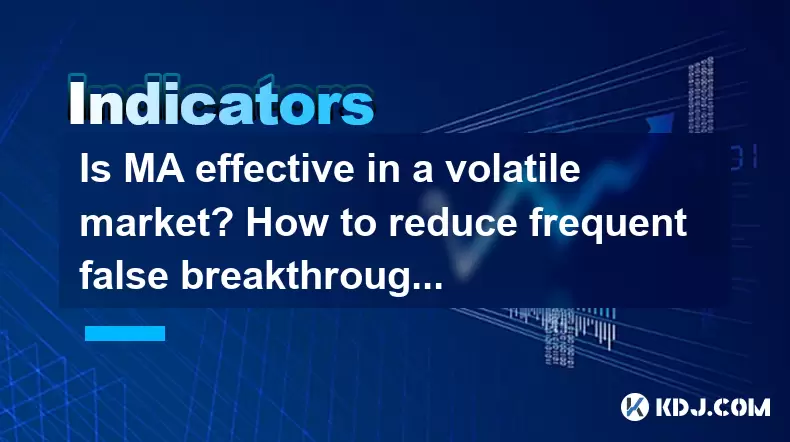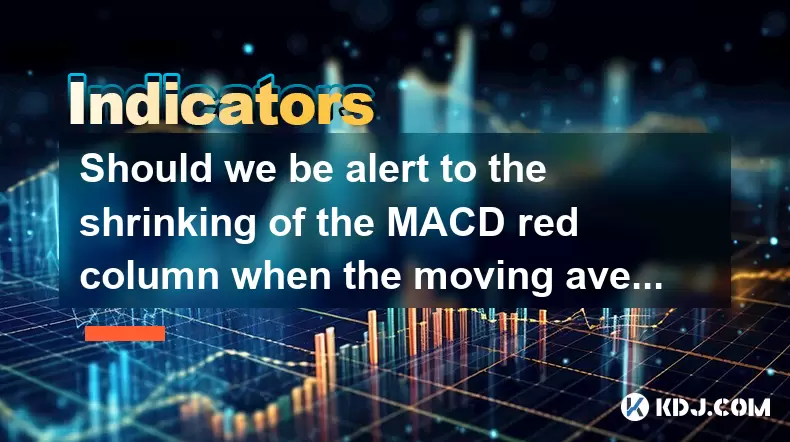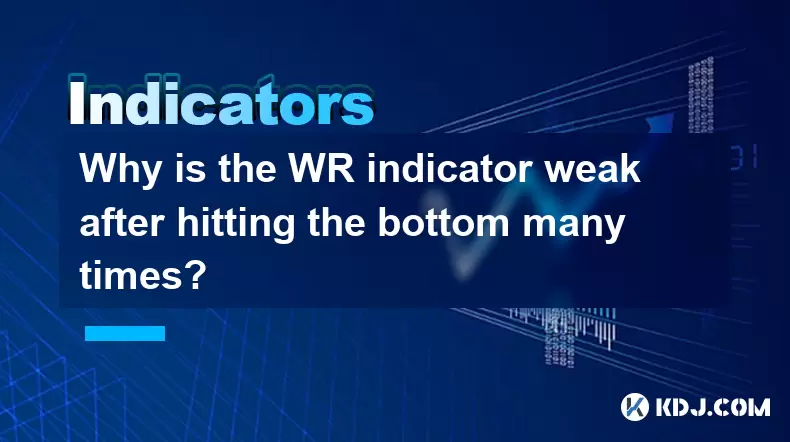-
 Bitcoin
Bitcoin $101,898.5005
-0.75% -
 Ethereum
Ethereum $2,258.1125
-1.07% -
 Tether USDt
Tether USDt $1.0004
0.01% -
 XRP
XRP $2.0178
-2.93% -
 BNB
BNB $624.0243
-1.53% -
 Solana
Solana $134.3298
-0.90% -
 USDC
USDC $0.9999
0.01% -
 TRON
TRON $0.2675
-2.05% -
 Dogecoin
Dogecoin $0.1538
-1.96% -
 Cardano
Cardano $0.5482
-1.11% -
 Hyperliquid
Hyperliquid $35.5636
5.45% -
 Bitcoin Cash
Bitcoin Cash $453.4902
-1.66% -
 Sui
Sui $2.5134
-2.97% -
 UNUS SED LEO
UNUS SED LEO $9.1292
1.77% -
 Chainlink
Chainlink $11.8457
-1.60% -
 Stellar
Stellar $0.2312
-2.73% -
 Avalanche
Avalanche $16.9721
0.29% -
 Toncoin
Toncoin $2.7549
-3.82% -
 Shiba Inu
Shiba Inu $0.0...01081
-1.10% -
 Litecoin
Litecoin $80.8250
-0.71% -
 Hedera
Hedera $0.1374
0.21% -
 Monero
Monero $305.4827
-2.36% -
 Ethena USDe
Ethena USDe $1.0006
0.00% -
 Dai
Dai $1.0000
-0.01% -
 Polkadot
Polkadot $3.2085
-3.12% -
 Bitget Token
Bitget Token $4.0845
-3.13% -
 Uniswap
Uniswap $6.3353
-1.63% -
 Pi
Pi $0.5085
-0.70% -
 Pepe
Pepe $0.0...08913
-3.82% -
 Aave
Aave $232.7090
-0.58%
Is MA effective in a volatile market? How to reduce frequent false breakthroughs?
In volatile crypto markets, using MAs with other indicators like RSI and Bollinger Bands can help reduce false breakthroughs and improve trading decisions.
May 23, 2025 at 01:28 pm

Is MA Effective in a Volatile Market? How to Reduce Frequent False Breakthroughs?
In the world of cryptocurrency trading, understanding and utilizing technical analysis tools such as Moving Averages (MA) can be pivotal to making informed trading decisions. This article delves into the effectiveness of MAs in volatile markets and explores strategies to mitigate the issue of frequent false breakthroughs.
Understanding Moving Averages in Crypto Trading
Moving Averages (MAs) are fundamental tools used by traders to smooth out price data and identify trends over a specified period. There are two primary types of MAs: Simple Moving Average (SMA) and Exponential Moving Average (EMA). The SMA calculates the average of a selected range of prices, typically closing prices, over a certain period. The EMA, on the other hand, gives more weight to recent prices, making it more responsive to new information.
In the context of the cryptocurrency market, MAs can help traders identify the direction of the trend and potential support and resistance levels. However, the effectiveness of MAs can vary significantly depending on the market's volatility.
The Effectiveness of MAs in Volatile Markets
Volatile markets are characterized by rapid and significant price movements, which can challenge the reliability of traditional technical indicators like MAs. In such environments, MAs can still be effective if used correctly, but traders must be aware of their limitations.
Shorter-term MAs, such as the 5-day or 10-day MA, are more sensitive to price changes and can provide quicker signals in volatile markets. However, this increased sensitivity can also lead to more false signals. Conversely, longer-term MAs, like the 50-day or 200-day MA, tend to be less responsive to short-term fluctuations but can offer a clearer picture of the overall trend.
To gauge the effectiveness of MAs in a volatile market, it is essential to combine them with other technical indicators and market analysis techniques. For instance, using volatility indicators like the Average True Range (ATR) alongside MAs can help traders understand the market's volatility and adjust their strategies accordingly.
Strategies to Reduce False Breakthroughs
False breakthroughs, or false breakouts, occur when the price temporarily moves beyond a significant level (such as a moving average) but then reverses direction. These can lead to significant losses if traders act on them prematurely. Here are several strategies to reduce the frequency and impact of false breakthroughs:
Use Multiple Time Frames: Analyzing MAs across different time frames can provide a more comprehensive view of the market. For example, if the price breaks above a 20-day MA on a daily chart but remains below the 20-day MA on a weekly chart, it might indicate a false breakout.
Combine with Other Indicators: Integrating MAs with other technical indicators, such as the Relative Strength Index (RSI) or the Moving Average Convergence Divergence (MACD), can enhance the reliability of signals. For instance, if the price breaks above a MA but the RSI indicates overbought conditions, it may suggest a false breakout.
Implement Price Confirmation: Waiting for price confirmation before acting on a breakout can help filter out false signals. This can involve waiting for the price to close above the MA for a specified number of periods or for the volume to increase significantly during the breakout.
Utilize Volatility Filters: Applying volatility filters, such as Bollinger Bands, can help traders identify periods of high volatility and adjust their MA strategies accordingly. If the price breaks above a MA but the Bollinger Bands indicate extreme volatility, it might be a false breakout.
Practical Application of MAs in Volatile Crypto Markets
To apply MAs effectively in a volatile crypto market, traders can follow a structured approach. Here is a step-by-step guide:
Select the Appropriate MA Type and Period: Depending on your trading style and the specific cryptocurrency, choose between SMA and EMA and decide on the period. For short-term trading, a 5-day or 10-day EMA might be suitable, while for long-term trends, a 50-day or 200-day SMA could be more appropriate.
Analyze the Market Context: Before relying on MA signals, assess the overall market conditions. Look at the broader trend, volatility levels, and any significant news or events that might impact the cryptocurrency.
Set Up Additional Indicators: Add complementary indicators like RSI, MACD, or Bollinger Bands to your chart. These can provide additional context and help validate MA signals.
Monitor for Breakouts: Watch for the price to break above or below the chosen MA. Pay close attention to the strength of the breakout and whether it aligns with other indicators.
Confirm the Breakout: Wait for price confirmation before acting on the breakout. This could involve waiting for a daily close above the MA or a significant increase in trading volume.
Adjust Your Strategy: Continuously monitor the market and adjust your strategy based on new information. If the market becomes more volatile, consider using shorter-term MAs or increasing the sensitivity of your volatility filters.
Case Studies: MAs in Action
To illustrate the practical application of MAs in volatile crypto markets, let's look at a couple of case studies:
Case Study 1: Bitcoin (BTC) and the 50-day SMA
In early 2021, Bitcoin experienced significant volatility. Traders using the 50-day SMA noticed that despite frequent price fluctuations, the overall trend remained bullish as long as the price stayed above the SMA. However, false breakouts occurred when the price briefly dipped below the 50-day SMA but quickly recovered. By combining the 50-day SMA with the RSI, traders could filter out these false signals and focus on more reliable breakouts.
Case Study 2: Ethereum (ETH) and the 20-day EMA
In mid-2021, Ethereum's price was highly volatile, with frequent spikes and drops. Traders using the 20-day EMA found it helpful for short-term trading. When the price broke above the 20-day EMA, it often signaled a short-term uptrend. However, false breakouts were common. By waiting for price confirmation and using Bollinger Bands to gauge volatility, traders could reduce the impact of these false signals and improve their trading outcomes.
Frequently Asked Questions
Q1: How can I determine the best MA period for my trading strategy?
A1: The best MA period depends on your trading style and the specific cryptocurrency you are trading. For short-term trading, consider using shorter periods like 5-day or 10-day MAs. For long-term trends, longer periods like 50-day or 200-day MAs may be more suitable. Experiment with different periods and analyze historical data to find what works best for your strategy.
Q2: Can MAs be used effectively in all market conditions?
A2: While MAs can be useful in various market conditions, their effectiveness can vary. In trending markets, MAs are particularly effective for identifying the direction and strength of the trend. In ranging or highly volatile markets, MAs may generate more false signals, requiring traders to use additional indicators and strategies to enhance their reliability.
Q3: Are there any alternative indicators to MAs that can be used in volatile markets?
A3: Yes, several alternative indicators can be used in volatile markets. Some popular alternatives include the Bollinger Bands, which incorporate volatility directly into their calculations, and the Ichimoku Cloud, which provides a comprehensive view of support, resistance, and trend direction. Additionally, using trend-following indicators like the Parabolic SAR can help traders navigate volatile conditions.
Q4: How often should I adjust my MA settings in response to market volatility?
A4: The frequency of adjusting MA settings depends on the level of market volatility and your trading strategy. In highly volatile markets, you might need to adjust your settings more frequently, possibly on a weekly or even daily basis. In more stable conditions, monthly adjustments may suffice. Always monitor market conditions and be prepared to adapt your strategy as needed.
Disclaimer:info@kdj.com
The information provided is not trading advice. kdj.com does not assume any responsibility for any investments made based on the information provided in this article. Cryptocurrencies are highly volatile and it is highly recommended that you invest with caution after thorough research!
If you believe that the content used on this website infringes your copyright, please contact us immediately (info@kdj.com) and we will delete it promptly.
- DOGE Recovery Amid US-Iran Tensions: A Market Rollercoaster
- 2025-06-23 20:45:13
- Fiserv, PayPal, and Stablecoins: A New Era of Interoperability?
- 2025-06-23 20:45:13
- Hacken Token's Wild Ride: Minting Exploit and the Cryptocurrency Crash
- 2025-06-23 21:05:12
- Dogecoin, Cloud Mining, and Blockchain: A Meme's Evolution
- 2025-06-23 21:25:12
- Layer 1 Turmoil: CEO Ousted Amidst Scam Allegations
- 2025-06-23 21:05:12
- Solana's Stumble: Price Crash and Network Exodus?
- 2025-06-23 21:25:12
Related knowledge

What is the significance of the gap formed by the gap opening not being filled within five days?
Jun 23,2025 at 09:42pm
Understanding Gaps in Cryptocurrency TradingIn the world of cryptocurrency trading, a gap refers to a situation where the price of an asset jumps from one level to another without any trading activity occurring between those two levels. This often happens over weekends or holidays when the market is closed, and significant news or events occur that impa...

Does the second golden cross of MACD above the zero axis represent the continuation of strength?
Jun 23,2025 at 08:21pm
Understanding the MACD IndicatorThe Moving Average Convergence Divergence (MACD) is a widely used technical analysis tool in cryptocurrency trading. It consists of three main components: the MACD line, the signal line, and the histogram. The MACD line is calculated by subtracting the 26-period Exponential Moving Average (EMA) from the 12-period EMA. The...

Is it effective when the DIF line suddenly crosses the zero axis when the volume is shrinking and the market is trading sideways?
Jun 23,2025 at 07:29pm
Understanding the DIF Line in Technical AnalysisThe DIF line, or the Difference Line, is a critical component of the MACD (Moving Average Convergence Divergence) indicator, widely used in technical analysis across cryptocurrency and traditional financial markets. It represents the difference between the 12-period EMA (Exponential Moving Average) and the...

Should we be alert to the shrinking of the MACD red column when the moving average is arranged in a bullish pattern?
Jun 23,2025 at 08:14pm
Understanding the MACD Red Column and Its SignificanceThe Moving Average Convergence Divergence (MACD) is a widely used technical indicator in cryptocurrency trading. It consists of three main components: the MACD line, the signal line, and the MACD histogram (the red column). The red column represents the difference between the MACD line and the signal...

Why is the WR indicator weak after hitting the bottom many times?
Jun 23,2025 at 07:56pm
Understanding the WR Indicator in Cryptocurrency TradingThe Williams %R (WR) indicator is a momentum oscillator used by traders to identify overbought and oversold levels in the market. It ranges from 0 to -100, with readings above -20 considered overbought and below -80 considered oversold. In the context of cryptocurrency trading, where volatility is ...

Is the shrinking cross star after the historical high a signal of topping?
Jun 23,2025 at 05:56pm
Understanding the Shrinking Cross Star PatternIn technical analysis, candlestick patterns are essential tools for traders to predict potential price movements. One such pattern is the shrinking cross star, which appears as a small-bodied candle with long upper and lower shadows, indicating indecision in the market. When this pattern forms after an asset...

What is the significance of the gap formed by the gap opening not being filled within five days?
Jun 23,2025 at 09:42pm
Understanding Gaps in Cryptocurrency TradingIn the world of cryptocurrency trading, a gap refers to a situation where the price of an asset jumps from one level to another without any trading activity occurring between those two levels. This often happens over weekends or holidays when the market is closed, and significant news or events occur that impa...

Does the second golden cross of MACD above the zero axis represent the continuation of strength?
Jun 23,2025 at 08:21pm
Understanding the MACD IndicatorThe Moving Average Convergence Divergence (MACD) is a widely used technical analysis tool in cryptocurrency trading. It consists of three main components: the MACD line, the signal line, and the histogram. The MACD line is calculated by subtracting the 26-period Exponential Moving Average (EMA) from the 12-period EMA. The...

Is it effective when the DIF line suddenly crosses the zero axis when the volume is shrinking and the market is trading sideways?
Jun 23,2025 at 07:29pm
Understanding the DIF Line in Technical AnalysisThe DIF line, or the Difference Line, is a critical component of the MACD (Moving Average Convergence Divergence) indicator, widely used in technical analysis across cryptocurrency and traditional financial markets. It represents the difference between the 12-period EMA (Exponential Moving Average) and the...

Should we be alert to the shrinking of the MACD red column when the moving average is arranged in a bullish pattern?
Jun 23,2025 at 08:14pm
Understanding the MACD Red Column and Its SignificanceThe Moving Average Convergence Divergence (MACD) is a widely used technical indicator in cryptocurrency trading. It consists of three main components: the MACD line, the signal line, and the MACD histogram (the red column). The red column represents the difference between the MACD line and the signal...

Why is the WR indicator weak after hitting the bottom many times?
Jun 23,2025 at 07:56pm
Understanding the WR Indicator in Cryptocurrency TradingThe Williams %R (WR) indicator is a momentum oscillator used by traders to identify overbought and oversold levels in the market. It ranges from 0 to -100, with readings above -20 considered overbought and below -80 considered oversold. In the context of cryptocurrency trading, where volatility is ...

Is the shrinking cross star after the historical high a signal of topping?
Jun 23,2025 at 05:56pm
Understanding the Shrinking Cross Star PatternIn technical analysis, candlestick patterns are essential tools for traders to predict potential price movements. One such pattern is the shrinking cross star, which appears as a small-bodied candle with long upper and lower shadows, indicating indecision in the market. When this pattern forms after an asset...
See all articles
























































































